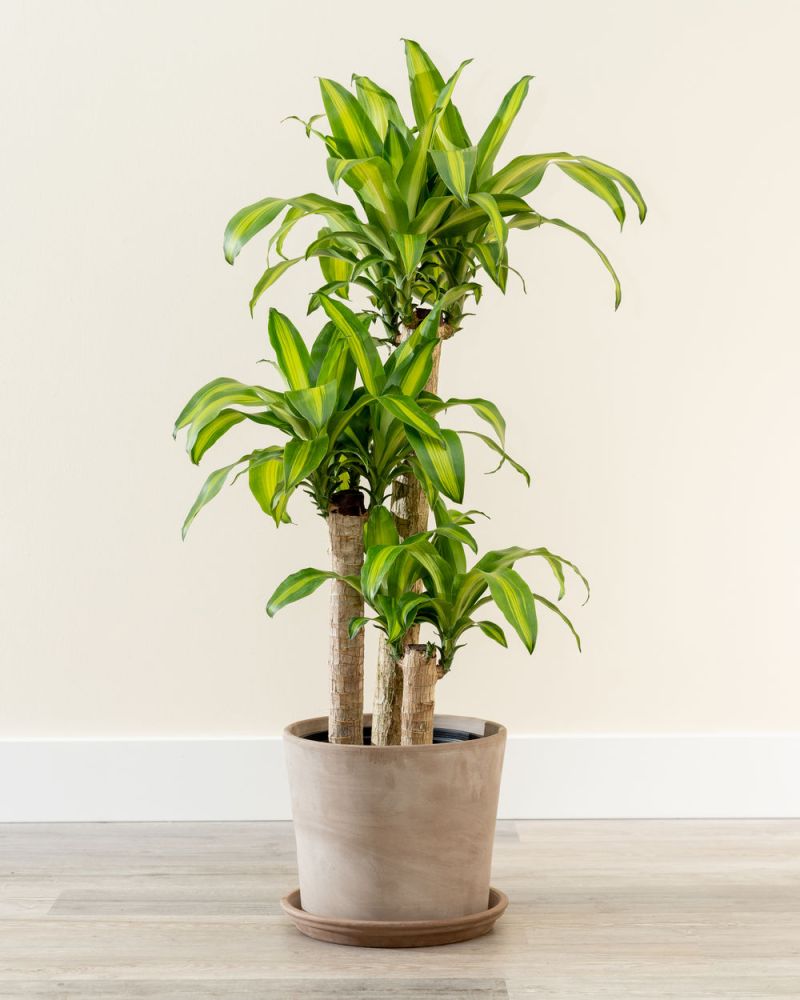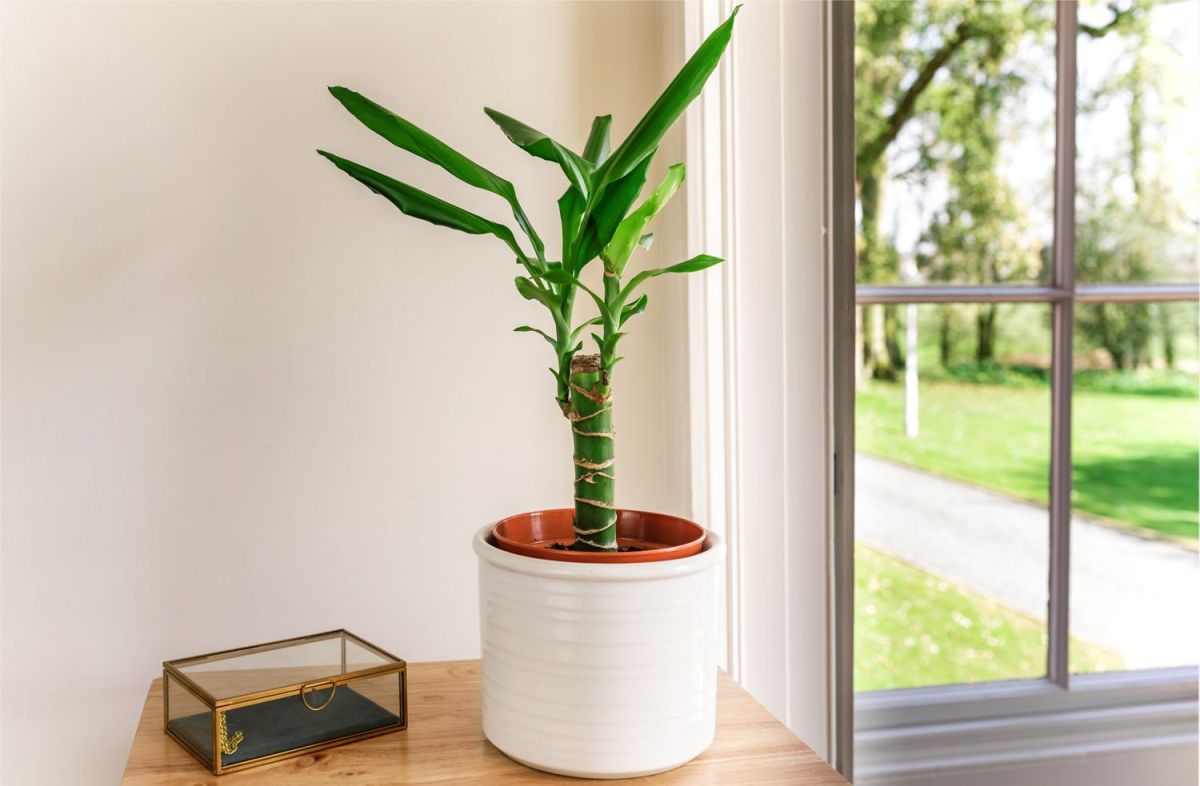The Ultimate Guide To Growing And Caring For A Lush Corn Plant In Your Home

House Plant Corn Plant: A Versatile and Low-Maintenance Green Addition to Your Home
What do you mean by a house plant corn plant?
A house plant corn plant, also known as Dracaena fragrans or cornstalk dracaena, is a popular indoor plant that makes a stunning addition to any home or office space. It is named after its resemblance to corn stalks, with long, arching leaves that have a corn-like texture and appearance.
This tropical plant is native to Africa and belongs to the asparagus family. It has become a favorite among plant enthusiasts due to its attractive foliage and low-maintenance nature. The corn plant can reach a height of up to six feet, making it an excellent choice for adding greenery and height to any room.
How to care for a house plant corn plant?

Caring for a house plant corn plant is relatively easy, even for beginners. It thrives in moderate to bright indirect light, making it ideal for areas where direct sunlight may be limited. Placing the plant near a north or east-facing window is usually sufficient to meet its light requirements.
When it comes to watering, the corn plant prefers its soil to be slightly moist but not waterlogged. Overwatering can lead to root rot, so it’s crucial to allow the top inch of the soil to dry out before watering again. During the winter months, reduce watering frequency as the plant enters a dormant period.
One of the reasons why the house plant corn plant is so popular is its ability to tolerate lower humidity levels. However, it appreciates occasional misting to enhance its overall health and prevent the tips of the leaves from becoming brown and dry.
Fertilizing the corn plant every two to four weeks during the growing season, which typically spans from spring to early fall, can promote better growth and vitality. Use a balanced, water-soluble fertilizer diluted to half-strength to prevent over-fertilization.
Lastly, occasional pruning can help maintain the corn plant’s shape and remove any dead or yellowing leaves. Simply trim the affected portions with clean, sharp scissors or pruning shears.
What is known about the house plant corn plant?
The house plant corn plant is known for its air-purifying properties, making it an excellent choice for improving indoor air quality. It helps remove toxins like formaldehyde, benzene, and trichloroethylene from the air, which are commonly found in household products and synthetic materials.
Additionally, the corn plant is a natural humidifier, releasing moisture into the air through its leaves. This can be particularly beneficial during the dry winter months when homes tend to have lower humidity levels.
Moreover, research suggests that having indoor plants, such as the corn plant, can have positive psychological effects. They can reduce stress, improve concentration, and enhance overall well-being. The vibrant green foliage of the corn plant adds a refreshing touch to any space, creating a calming and soothing environment.
Solution: Adding a house plant corn plant to your home
If you’re looking to incorporate more greenery into your home or office, a house plant corn plant is an excellent choice. Its versatility and numerous benefits make it a popular option among plant enthusiasts of all levels of experience.
The corn plant’s low-maintenance nature, combined with its air-purifying properties and aesthetic appeal, makes it a fantastic addition to any indoor space. Whether you have a small apartment, a spacious living room, or an office cubicle, the corn plant can thrive and beautify your surroundings.
Its unique corn-like foliage adds texture and visual interest to any room, creating a natural focal point. The plant’s ability to grow tall also makes it ideal for adding vertical appeal and making a statement. With proper care, your corn plant can become a long-lasting companion that brings joy and tranquility to your space.
Conclusion
In conclusion, a house plant corn plant is an excellent choice for those looking to enhance their indoor spaces with a touch of nature. Its striking resemblance to corn stalks, low-maintenance nature, and air-purifying properties make it an ideal addition to any home or office.
By providing moderate to bright indirect light, appropriate watering, occasional misting, and regular fertilization, you can ensure your corn plant thrives and adds beauty to your surroundings. Remember to prune as needed to maintain its shape and remove any damaged leaves.
Investing in a house plant corn plant not only brings aesthetic benefits but also contributes to better indoor air quality and psychological well-being. Create a healthier and more inviting environment by welcoming this versatile and attractive plant into your life.
FAQs (Frequently Asked Questions)
1. How often should I water my house plant corn plant?
Water your corn plant when the top inch of soil feels dry. Overwatering can lead to root rot, so it’s essential to allow the soil to partially dry out between waterings.
2. Can I place my corn plant in direct sunlight?
Corn plants prefer moderate to bright indirect light. While they can tolerate some direct sunlight, it’s best to avoid intense, direct sun exposure as it can scorch the leaves.
3. Are corn plants safe for pets?
Corn plants are considered mildly toxic to cats and dogs. If ingested, they can cause gastrointestinal discomfort. It’s advisable to keep the plant out of reach of curious pets or opt for pet-friendly alternatives.
4. How can I propagate my corn plant?
Corn plants can be propagated through stem cuttings. Take a healthy stem cutting with several leaves and place it in a container with water or well-draining soil. Keep the cutting in a warm and humid environment until roots develop.
5. Can I use my corn plant to improve indoor air quality?
Yes, the house plant corn plant is known for its air-purifying properties. It helps remove toxins like formaldehyde and benzene from the air, enhancing indoor air quality and creating a healthier living environment.

I am a beginner writer who continues to learn and consistently creates informative articles to express the ideas that I master.